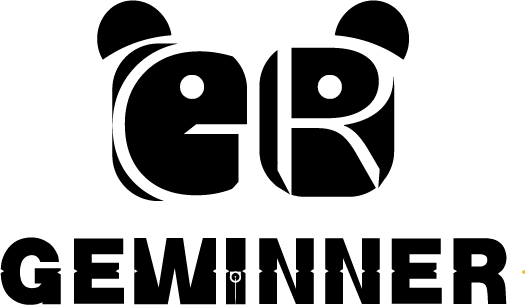
Tattoo Needle Cartridge vs. Traditional Tattoo Needle: What's the Real Difference?
Share
For tattoo artists and enthusiasts alike, choosing the right tools can make or break a design. Central to this debate are tattoo needle cartridges and traditional tattoo needles—two systems with distinct strengths that impact workflow, safety, and artistry. While both serve the same core purpose (delivering ink to the skin), their design, usability, and hygiene set them worlds apart. This guide breaks down those differences to help you choose the right tool for your craft.
What Exactly Are They?
First, let's define each tool to avoid confusion:
Chinese (China): • Traditional Tattoo Needle : A pre-soldered cluster of needles attached to a long metal bar. It requires manual assembly with a separate tube and grip, and is typically used with coil tattoo machines. Artists must handle sterilization and setup themselves.
Chinese (China): • Tattoo Needle Cartridge : A modular, all-in-one unit that combines needles, a needle bar, and a tip within a disposable housing. These pre-assembled cartridges snap directly into pen-style or rotary tattoo machines and come pre-sterilized. Think of them as "ready-to-use" needle systems.
Key Differences: A Quick Look
|
Feature |
Traditional Tattoo Needle |
Tattoo Needle Cartridge |
|
Setup Time |
5–10 minutes (assembly + sterilization) |
10–30 seconds (snap-and-go) |
|
Hygiene |
Requires manual sterilization. |
Pre-sterilized (EO gas) and disposable. |
|
Compatibility |
Works mostly with coil machines. |
Fits most rotary/wireless pen machines. |
|
Customization |
High (solder own groupings) |
Limited (pre-made configurations) |
|
Cost Per Unit |
Lower (bulk-friendly) |
Higher (premium for convenience) |
1. Workflow: Speed vs. Control
The biggest difference between the two tools is how they fit into an artist's routine:
Traditional Needles: Slow but Customizable
Chinese (China): • Setup Steps : You must attach the needle bar to the machine, slide on a tube, secure the grip, and sterilize everything after use.
Chinese (China): • Best For : Artists who prioritize control over speed—like those doing custom, one-of-a-kind designs that require unique needle groupings.
Chinese (China): • Downside : Switching between liners (for outlines) and shaders (for filling) mid-session means disassembling the entire setup, which eats into client time.
Tattoo Needle Cartridges: Fast and Streamlined
Chinese (China): • Setup Steps : Simply insert the pre-assembled cartridge into your machine's grip. No tools or disassembly required.
Chinese (China): • Best for : Busy studios or mobile artists. Switching from a round liner (for crisp lines) to a curved magnum (for soft shading) takes seconds.
Chinese (China): • Downside : Less room for adjustments—you're limited to pre-made needle configurations (e.g., 3RL for fine lines, 1205M1 for color packing).
2. Hygiene: Disposable vs. Reusable
Tattoo safety hinges on preventing cross-contamination—and in this regard, cartridges have a distinct advantage:
Chinese (China): • Traditional needles : Require autoclave sterilization after each use. Imperfect sterilization risks spreading germs.
Chinese (China): • Tattoo Needle Cartridges : Each unit is sealed and sterilized with ethylene oxide (EO gas). After use, simply discard it—no cleaning required. This is a game-changer for busy shops or artists new to sterilization protocols.
3. Compatibility: It's All About the Machine
Your machine will dictate which tool you can use.
Chinese (China): • Traditional Needles : Best paired with heavy coil machines, which rely on the needle bar's weight for stability.
Chinese (China): • Tattoo Needle Cartridges : Designed for modern rotary or pen-style machines (e.g., Bishop, Cheyenne, Mast Tour). Most are “universal,” fitting multiple brands—although some proprietary cartridges only work with specific machines.
4. Cost: Short-Term vs. Long-Term
Budget is another critical factor.
Chinese (China): • Traditional Needles : Cheaper upfront—bulk packs cost a fraction of cartridges. However, you'll need to invest in autoclaves and replacement tubes.
Chinese (China): • Tattoo Needle Cartridges : More expensive per unit. For example, a box of 20 pre-sterilized cartridges costs more than a pack of 50 traditional needles. However, you save on sterilization equipment and labor costs.
Which One Should You Choose?
Chinese (China): • Choose Traditional Needles If : You're an experienced artist who enjoys customizing setups, works with coil machines, or wants to reduce long-term supply costs.
Chinese (China): • Choose Tattoo Needle Cartridges if : You value speed, prioritize hygiene, use a pen/rotary machine, or run a high-volume studio. They're also ideal for beginners—no assembly skills are required.
Final Thoughts
The tattoo needle cartridge isn't just a "new fad"—it's a tool that solves old problems (slow setup, sterilization stress) for modern artists. Traditional needles, however, still hold their own for those who crave customization.
No matter which you choose, the goal remains the same: creating safe, stunning tattoos. Have you switched from traditional needles to cartridges? Or do you swear by the old-school method? Share your experience in the comments—and pass this guide along to a fellow artist who's on the fence!
